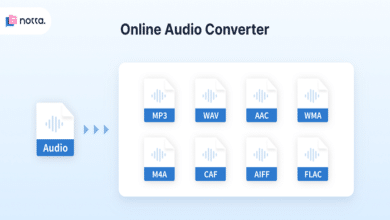A Complete Guide to BGIS Registration: What You Need to Know

BGIS (Building and General Infrastructure Services) registration plays a vital role for businesses, contractors, and service providers in the construction and infrastructure industry. It is a process that allows individuals and companies to get officially recognized and licensed, thereby enabling them to offer specialized services to the public sector, private corporations, or other related entities. In this article, we’ll explore what BGIS registration is, the process of registration, its importance, and the various benefits it offers.
Understanding BGIS registration is essential for anyone planning to work in infrastructure and construction, as it ensures compliance with legal and safety standards, while also enhancing credibility within the industry.
What is BGIS Registration?
BGIS registration refers to the process by which contractors, vendors, and service providers in the construction and infrastructure sector are formally registered with a relevant body or authority. This registration is necessary for professionals who wish to work on government contracts or within industries that require certified vendors for their services.
The BGIS system helps maintain a database of approved contractors, vendors, and service providers, ensuring that only those meeting the required qualifications and standards are eligible for public and private sector projects. BGIS registration is vital for compliance, safety, and quality assurance, ensuring that registered companies follow established guidelines and legal regulations.
The Importance of BGIS Registration
BGIS registration provides a range of benefits to contractors, vendors, and service providers. For one, it is a crucial step in accessing lucrative government contracts, which can be a significant source of business for infrastructure-related companies. Moreover, being registered under BGIS can improve a company’s reputation by demonstrating professionalism, compliance with industry standards, and reliability.
Having BGIS registration also means that your company is recognized as a qualified entity capable of delivering high-quality services, whether in construction, facilities management, or general infrastructure development. It helps protect businesses and clients by ensuring that all work complies with necessary standards and regulations.
The BGIS Registration Process: A Step-by-Step Guide
The BGIS registration process may vary depending on the country or region, but generally, the steps involved include the following:
1. Eligibility Check
Before applying for BGIS registration, it’s crucial to ensure your business meets the eligibility criteria set out by the registering body. This may include having the necessary experience, certifications, and licenses in the construction or infrastructure industry.
2. Gather Required Documentation
The next step involves gathering the required documentation for BGIS registration. This typically includes your business’s legal documents (such as business registration or incorporation papers), proof of qualifications, financial statements, and insurance coverage. You may also need to provide details of your company’s previous projects or experience in the relevant field.
3. Complete the Application
The next step is filling out the BGIS registration application. This form will ask for information about your business, including your services, qualifications, and history in the industry. Make sure all the information is accurate and complete to avoid delays in processing.
4. Submit the Application and Pay Fees
Once your application is completed, submit it along with any required fees. Fees may vary depending on the level of registration you are applying for. Ensure that all payments are made promptly to avoid delays in the registration process.
5. Assessment and Verification
After submission, your application will be assessed by the BGIS authority. This may involve verification of your qualifications, work experience, and other credentials. If necessary, the registering body may request additional documentation or clarification.
6. Approval and Issuance of BGIS Certificate
If your application is successful, you will receive a BGIS certificate that confirms your registration. This certificate is proof that your company is officially recognized and qualified to provide services in the construction and infrastructure sectors.
Requirements for BGIS Registration
To be eligible for BGIS registration, companies must meet specific criteria. These requirements can vary by jurisdiction, but some of the common ones include:
- Relevant Experience: Companies must have experience in construction, facilities management, or infrastructure services.
- Licensing: Contractors must have the appropriate licenses to operate legally in their respective regions.
- Financial Stability: Applicants must demonstrate financial stability, often through financial statements or balance sheets.
- Insurance: Adequate insurance coverage, such as liability insurance, is often required to ensure that the company is capable of handling any damages or issues that arise during projects.
- Workforce Qualifications: Staff members must possess the necessary qualifications and certifications to carry out specialized tasks in the infrastructure field.
The Benefits of BGIS Registration
BGIS registration offers several advantages, making it an essential step for companies in the construction and infrastructure industries. Below are some of the key benefits:
1. Access to Government Contracts
BGIS registration provides companies with access to government contracts, which are often lucrative and large-scale. Governments and public institutions generally prefer working with registered contractors to ensure quality and legal compliance.
2. Industry Credibility
Being BGIS registered boosts a company’s credibility within the industry. It demonstrates that the company has met the required qualifications and is capable of handling complex and large-scale infrastructure projects.
3. Networking Opportunities
BGIS registration opens up networking opportunities with other contractors, vendors, and professionals within the industry. It provides a platform for collaboration and partnership with other registered entities.
4. Compliance with Legal Requirements
BGIS registration ensures that companies are compliant with local, national, and international regulations regarding safety, quality, and environmental standards. It also protects both businesses and clients from legal repercussions.
5. Marketability
For contractors and service providers, BGIS registration enhances marketability. Clients prefer working with certified and registered companies as it guarantees a higher level of professionalism and quality.
BGIS Registration Fees and Costs
The costs associated with BGIS registration can vary based on the level of registration and the services provided. Some factors that may affect the fees include:
- Type of Registration: There may be different levels or categories of BGIS registration, such as general, specialized, or sub-contractor registration, each with its own fee structure.
- Application Fees: These are the initial fees paid when submitting your application. They typically cover the processing of your documents and verification.
- Renewal Fees: BGIS registration may need to be renewed periodically, and renewal fees are often required.
- Inspection Fees: Some jurisdictions may require an inspection of your company’s facilities or operations before granting registration.
Be sure to budget for these costs when preparing to apply for BGIS registration.
Conclusion
BGIS registration is an important step for businesses in the construction and infrastructure sectors. It provides access to government contracts, enhances credibility, and ensures compliance with industry standards. The registration process can be a bit tedious, but the long-term benefits far outweigh the initial effort.
Whether you are a contractor, vendor, or service provider, getting BGIS registered is a step toward securing high-quality projects and establishing a reputation as a trustworthy, professional company. The process may vary depending on your location, but it is undoubtedly an essential investment for anyone in the construction and infrastructure industries.
FAQs
1. How long does the BGIS registration process take?
The BGIS registration process can take anywhere from a few weeks to a few months, depending on the jurisdiction and the complexity of your application.
2. What happens if my BGIS registration application is rejected?
If your application is rejected, you may be given an opportunity to correct the issues or provide additional documentation. Alternatively, you can appeal the decision or reapply after addressing the concerns raised.
3. Is BGIS registration mandatory for all contractors?
BGIS registration is not mandatory for all contractors, but it is highly recommended for those who wish to work on government contracts or collaborate with other registered entities in the industry.
4. Can I work on private projects without BGIS registration?
Yes, you can work on private projects without BGIS registration. However, many government and large corporate projects require BGIS registration, making it beneficial for securing high-value contracts.
5. How do I maintain my BGIS registration?
Maintaining BGIS registration typically involves periodic renewals and staying compliant with industry standards and regulations. Ensure that your company continues to meet the eligibility requirements and renew your registration on time.




